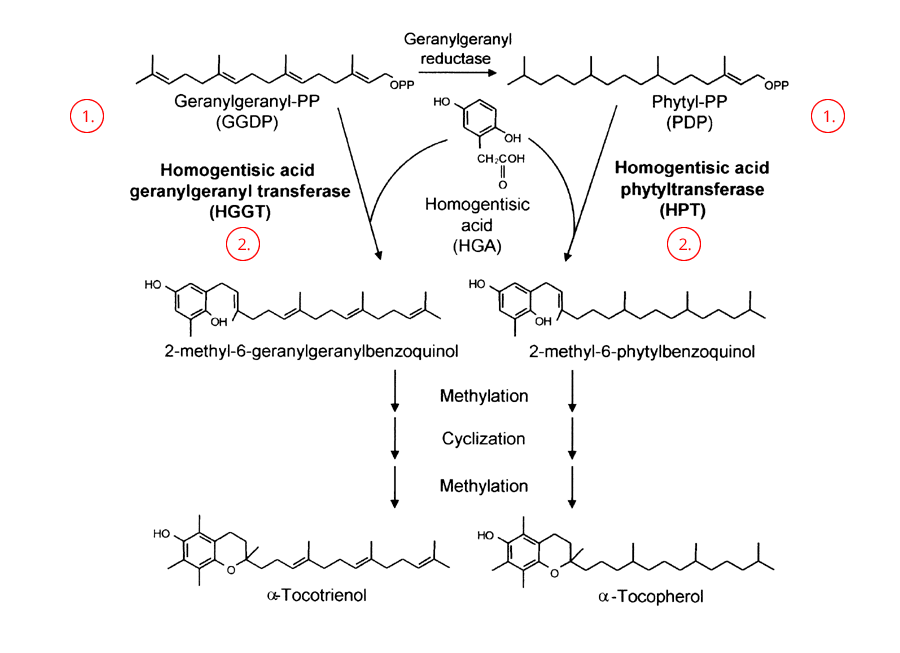Both tocotrienols and tocopherols are lipid soluble antioxidants found in plants naturally. Tocopherols has been shown to promote the lifespan of the seeds whereas tocotrienols has demonstrated lipid peroxidation reduction in tobacco leaves. The production of tocopherols and tocotrienols occurs at the inner envelope membrane of chloroplasts and they are able to protect photosynthetic compounds from lipid peroxidation and oxygen toxicity. The overview of the biosynthesis of tocotrienols and tocopherols are shown as the figure below:

- The biosynthesis of tocotrienols differs from tocopherols is the initial condensation reaction, where the former uses geranyl-geranyl diphosphate (GGDP) and the latter uses phytyl disphosphate (PDP) as substrates.
- The synthesis of α-tocopherol can be achieved by HPT-catalyzed condensation reaction, followed by methylation and cyclization and then a second methylation to form chromanol head group. Whereas for α-tocotrienol, the process for the biosynthesis of tocopherol is the same except for substrate of the condensation reaction (GDDP) and the enzyme (HGGT).
References
- Yang, W et.al (2010). Vitamin E biosynthesis: functional characterization of the monocot homogentisate geranylgeranyl transferase. The Plant Journal (2011) 65, 206–217.